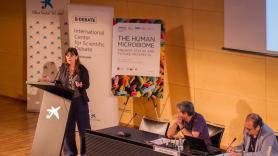1. From a bacteria-free world to the ‘microbiome boom’
“We’ve known that microorganisms exist for some time now, but until recently they were contaminants. The dream was to be bacteria free,” remembered Francisco Guarner, head of the IBD Section at Vall d’Hebron University Hospital and one of the scientific leaders of this B·Debate. But when scientists managed to breed mice without germs, “they didn’t grow, had many allergies and died surprisingly easily”: microorganisms are essential to a normal life.
Since World War II, there has been a rise in the number of cases of chronic non-communicable conditions like cancer, autism and allergies. This hasn’t happened in developing countries. One possible explanation is referred to as the hygiene hypothesis: the use of antibiotics, increase in cesarean births, decrease in breastfeeding and, in general, increased asepsis in wealthy countries has limited our contact with certain microorganisms that are necessary to educate our defenses. This is why, according to Guarner, “the immune system makes more mistakes and changes to the traditional microbiome may be the origin of this increase in disease.”
But why the relatively sudden interest in the microbiome? Because of technology. “New DNA sequencing techniques have allowed us to look at and study our other genome, that of all those microorganisms,” said M. Luz Calle, director of the Bioinformatics and Medical Statistics Group at the University of Vic-Central University of Catalonia. This technology can not only identify the types of microorganisms but also the genes they contain.
In general, we have an average of 600,000 microbial genes in our gut alone and, in the words of Dusko Ehrlich, director emeritus of the French National Institute for Agricultural Research, “with regard to the microbiome as well, it’s better to be rich than poor.” The lower the diversity, the greater the tendency to accumulate fat, to develop diabetes and, in general, to be in poorer health.



